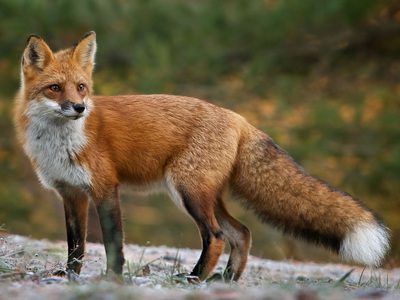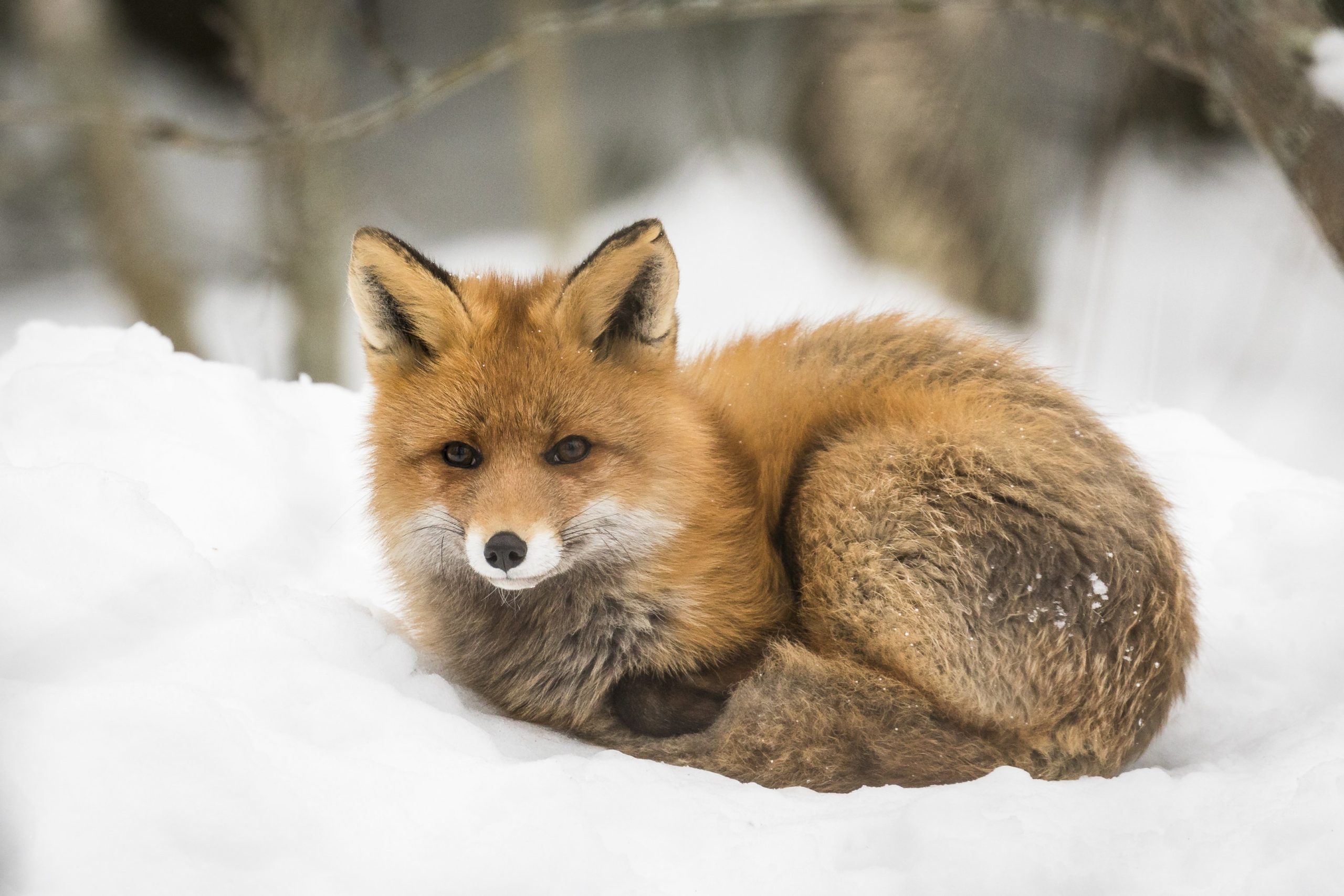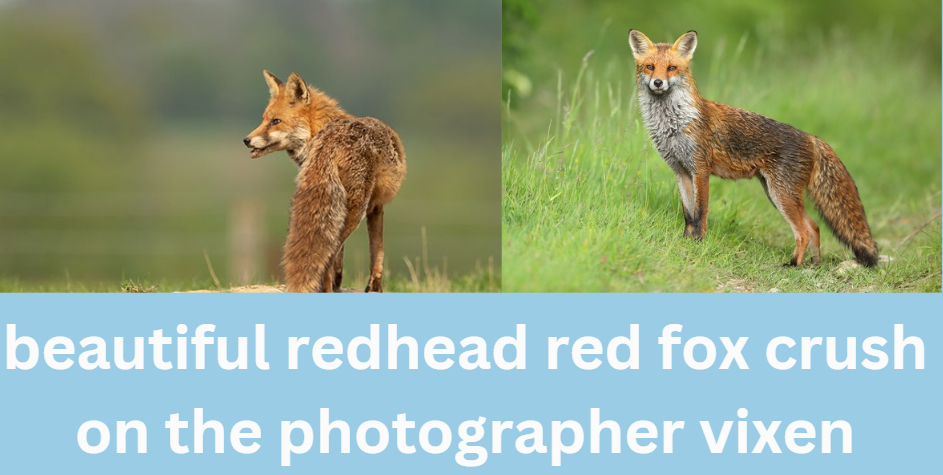Beautiful Redhead Red Fox Crush on the Photographer Vixen: A Captivating Tale in the Wilderness
In the heart of an enchanting forest, a unique relationship blossoms between a beautiful redhead red fox and a talented photographer known affectionately as the “Photographer Vixen.” This captivating story is not just about wildlife photography, but about the curious, enchanting connection that develops between a wild animal and a human, creating a tale that blends wonder, nature, and unexpected affection.
This article will explore the story behind this beautiful bond, provide insights into red fox behavior, and analyze the emotional and creative impact of such wildlife photography. We’ll dive deeper into the role of the photographer, the unique personality traits of red foxes, and how this relationship has fascinated people in the USA and beyond.
Contents
- 1 The Enigmatic Red Fox: A Beautiful Redhead in the Wild
- 2 The Photographer Vixen: Capturing the Essence of the Wild
- 3 The Unlikely Crush: How the Red Fox Fell for the Photographer
- 4 The Role of Wildlife Photography in Conservation
- 5 Red Foxes and Human Interaction: The Science Behind Animal Affection
- 6 Conclusion: The Beauty of Connection in the Wild
- 7 FAQs
The Enigmatic Red Fox: A Beautiful Redhead in the Wild

The red fox (Vulpes vulpes) is one of the most widespread carnivorous species in the world, known for its intelligence, adaptability, and striking appearance. The red fox’s coat, which ranges from a rich, fiery red to shades of auburn, is one of the defining characteristics that gives this species its unique allure.
Physical Traits of a Redhead Red Fox
- Fur Color: Their coat varies in color, but the most iconic feature is the red fur, which glows brilliantly under sunlight. This shimmering coat is particularly prominent in certain regions of North America, where the dense forest and lush green meadows serve as a beautiful backdrop to their radiant appearance.
- Eyes: Red foxes have piercing amber eyes that reflect both wisdom and curiosity, a gaze that can be described as both playful and intense, especially when they lock eyes with humans, sparking an unspoken bond.
- Tail: Their bushy tails, also known as a “brush,” help maintain balance but also serve as a sign of their emotional state. The tail becomes a visual cue to their mood—a fascinating characteristic that likely played a role in the story of the “Beautiful Redhead Red Fox Crush on the Photographer Vixen.”
The Fox’s Intelligence and Personality
Foxes are known for their cunning and intelligence. These creatures are highly curious, which may explain why the redhead red fox featured in this story became so intrigued by the Photographer Vixen. Whether it’s hunting, evading predators, or interacting with humans, foxes are adaptable and quick-witted, making them perfect subjects for wildlife photography.
The Photographer Vixen: Capturing the Essence of the Wild
The “Photographer Vixen” refers not just to any photographer but to one who demonstrates a special bond with wildlife, particularly foxes. In the context of this tale, the photographer is someone who sees beyond the lens and captures the heart and soul of the wild, forming an extraordinary connection with their subject.
How Wildlife Photography Fosters Connection
- Understanding Behavior: Great wildlife photographers study their subjects meticulously. They know the routines, behaviors, and emotional cues of the animals they photograph. This understanding likely facilitated the photographer’s ability to gain the red fox’s trust.
- Patience and Persistence: Wildlife photography is about waiting for the right moment. It often takes weeks, if not months, of spending time in nature for animals to trust a human enough to reveal their natural behaviors. The photographer in this story likely displayed great patience, which the fox recognized and appreciated.
- Creative Expression: Through photography, the Photographer Vixen tells a story. Every image captures a moment of the fox’s life, but it also reflects the deep connection between the human and the wild. This connection allows the photographer to portray the fox as more than just an animal; it becomes a character in a broader narrative of the natural world.
The Unlikely Crush: How the Red Fox Fell for the Photographer
The heart of this story is the fox’s fascination with the Photographer Vixen, a unique bond that surpasses the typical human-animal interaction. While animals and humans form bonds in many ways, this tale stands out because of the emotional depth and apparent affection the red fox displays toward the photographer.
How Does a Fox Show Affection?
Foxes are not traditionally known for being affectionate with humans. However, they are curious and social animals, especially during the spring when they are more active in seeking companionship. In the case of the “Beautiful Redhead Red Fox Crush on the Photographer Vixen,” this interaction goes beyond mere curiosity.
- Approaching Without Fear: The red fox began to approach the photographer without displaying the usual fear or caution that wild animals typically exhibit toward humans.
- Body Language: Foxes communicate with body language, much like domestic dogs. The fox’s tail wagging, ears perked up, and relaxed posture are all signs that it felt safe and comfortable in the photographer’s presence.
- Playful Behavior: Foxes are known for their playful nature, especially when they feel safe. In this story, the fox engaged in behaviors such as jumping, rolling in the grass, and perhaps even “posing” for the photographer, showcasing a level of trust rarely seen in wild animals.
Why This Story Resonates with the Audience
The notion of a wild animal developing a “crush” on a human is both intriguing and heartwarming. The fox’s behavior is more than just a survival mechanism—it displays affection and curiosity. People love stories that remind them of the interconnectedness of all living beings, and this tale captures that essence perfectly.
The Role of Wildlife Photography in Conservation
Wildlife photography, especially stories like the “Beautiful Redhead Red Fox Crush on the Photographer Vixen,” serves a greater purpose than just capturing beautiful images. It plays a crucial role in conservation efforts, raising awareness about endangered species, habitats, and the need to protect wildlife.
Raising Awareness Through Art
The story of the redhead red fox and the Photographer Vixen isn’t just an isolated moment. By sharing images and stories of these interactions, photographers help bring attention to the beauty and vulnerability of nature. Audiences in the USA, where many are disconnected from wildlife, are drawn to these images, prompting greater interest in conservation.
Connecting People to Nature
The story invites the viewer into the world of the red fox, forging a connection between people and the wild. It shows that animals have personalities, emotions, and the capacity to form bonds. This can lead to more empathetic and mindful behavior toward wildlife, fostering a deeper respect for nature.
Encouraging Eco-Tourism and Ethical Wildlife Encounters
The fascination with wildlife photography has also led to a surge in eco-tourism, where people travel to witness these moments firsthand. However, the Photographer Vixen’s story also highlights the importance of ethical wildlife encounters. True respect for animals comes from observing them without disrupting their natural behavior—a lesson that can be gleaned from this photographer’s approach to their fox companion.
Red Foxes and Human Interaction: The Science Behind Animal Affection

The story of the beautiful redhead red fox developing a “crush” on the Photographer Vixen isn’t just a heartwarming tale—it may also have scientific grounding. Animals, especially mammals, are known to form emotional bonds with humans under the right conditions.
Can Wild Animals Develop Affection for Humans?
While wild animals like red foxes are usually cautious of humans, there are documented cases of them forming bonds with people. This is more likely when the human demonstrates patience, calm energy, and spends prolonged time in the animal’s habitat.
The Role of Oxytocin in Animal-Human Bonds
Recent studies have shown that oxytocin, the hormone responsible for bonding in humans, also plays a role in human-animal relationships. When animals feel safe and non-threatened, they may release oxytocin, leading to feelings of trust and affection toward humans. This may explain why the red fox in this story was able to form such a strong connection with the photographer.
Conclusion: The Beauty of Connection in the Wild
The story of the “Beautiful Redhead Red Fox Crush on the Photographer Vixen” is a powerful reminder of the deep, often unexpected connections that can form between humans and animals. It showcases the importance of patience, respect, and understanding in wildlife photography and serves as a call to appreciate and protect the natural world.
This enchanting narrative is not just a tale of a fox and a photographer but a symbol of the beauty of life in the wilderness, where love, affection, and connection transcend species. For those in the USA and around the world, this story inspires a renewed passion for wildlife conservation and the magic that lies in every forest, waiting to be discovered.
FAQs
Q: What is the significance of the redhead red fox’s “crush” on the Photographer Vixen?
A: The term “crush” in this context refers to the fox’s unusual level of trust and affection toward the photographer, which goes beyond typical wild animal behavior. It highlights a rare bond formed through patience and respect.
Q: Can foxes really form emotional bonds with humans?
A: Yes, while it is rare, animals like foxes can form bonds with humans, especially if they feel safe and trust the person. These bonds are often built over time and require consistent, calm interaction.
Q: How does wildlife photography help in conservation efforts?
A: Wildlife photography raises awareness about the beauty and vulnerability of animals in the wild. By sharing images and stories, photographers can inspire people to support conservation efforts and protect endangered species.
Q: Is it ethical to interact with wild animals like the red fox?
A: Ethical wildlife interaction involves observing animals in their natural habitat without disturbing or altering their behavior. It’s crucial to respect the animals’ space and avoid any action that could stress or endanger them.

